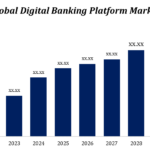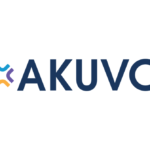Get ready: Europe’s payments revolution has arrived.
16th January 2025
Europe is on the brink of a payments revolution.
Europe is on the brink of a payments revolution, driven by the Instant Payments Regulation (IPR), which is set to transform the payments landscape by making instant payments the standard. This move supports the region’s rapidly expanding digital economy and meets growing consumer demand for fast, affordable, and transparent transactions.
Starting January 9, 2025, EU banks must ensure their customers can receive instant euro transfers. Payments must arrive in the recipient’s account within 10 seconds, with payment service providers (PSPs) confirming the transaction almost immediately. Additionally, banks are required to conduct thorough sanctions screening and fraud detection within this time frame.
By October 9, 2025, EU banks will also be required to allow customers to send instant payments, complete with a free verification of payee service. This will help prevent errors in payee details, such as accidental typos, reducing misdirected payments.
With upcoming deadlines for both banks (2025) and non-banks (2027), the IPR is forcing banks to assess how the changes will affect their payment services and revenue models.
Here are some key considerations for the year ahead:
Increased competition: EU banks face pressure not only from other banks but also from new PSPs offering faster transaction speeds. According to recent data from Wise, customers who receive instant money transfers have a 6% higher retention rate compared to those waiting more than 48 hours. Banks must innovate quickly to stay competitive.
More complex liquidity forecasting: The shift to 24/7 operations means banks must constantly monitor liquidity to avoid excessive buffers and their associated costs. This will require banks to update their liquidity forecasting and technology to keep up with the rise of instant payments.
Customer experience is critical: Today’s consumers expect seamless, real-time, and affordable services. Banks must provide transparent, efficient payment experiences to meet these expectations.
Increased regulatory compliance:Banks will face heightened compliance requirements around data privacy, transaction monitoring, and reporting for instant payments. While these regulations add to the compliance burden, they also help standardize the European payment framework, creating greater structure across the region.
Faster compliance checks will become essential: Many banks rely on legacy systems, making it challenging to implement new technologies like instant compliance checks. The IPR will push banks to invest in tech-driven solutions and local expertise to identify financial crimes swiftly, whether through in-house innovation or partnerships.
The IPR signals a major shift in European payments, promoting a more efficient, seamless transaction experience for both consumers and businesses. This also positions the EU at the forefront of digital payments innovation alongside leaders like the UK, Brazil, and India, setting an example for other regions to improve their payment systems.
However, the IPR also highlights the challenges of delivering instant payments on both a domestic and global scale. With G20 deadlines targeting faster, more transparent, and accessible global payments by 2027, the year ahead will see banks adopting a more comprehensive approach to address these hurdles.
































